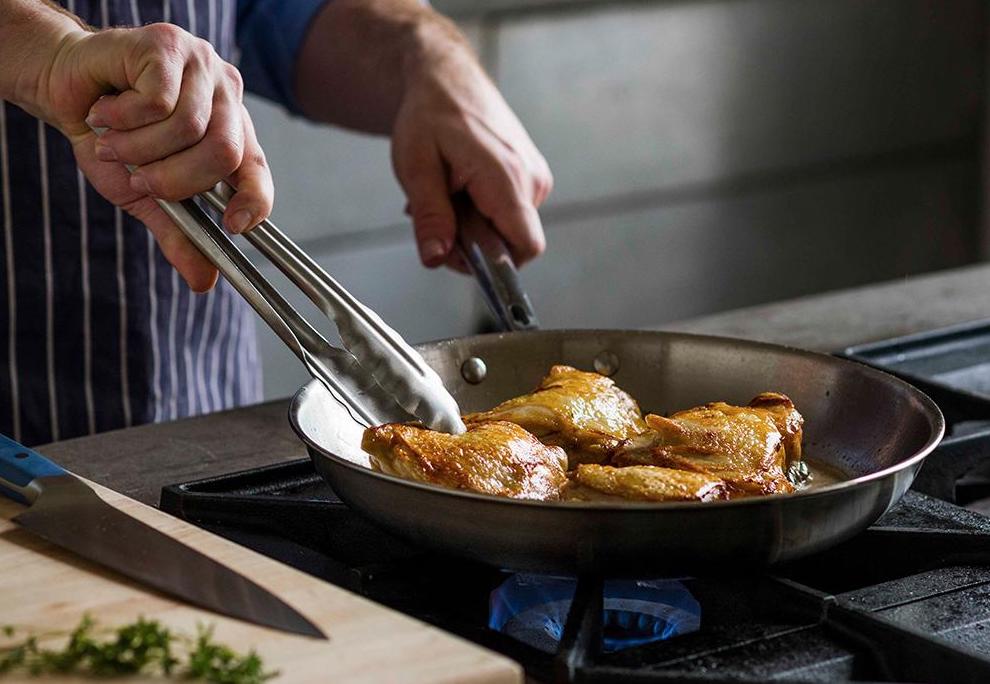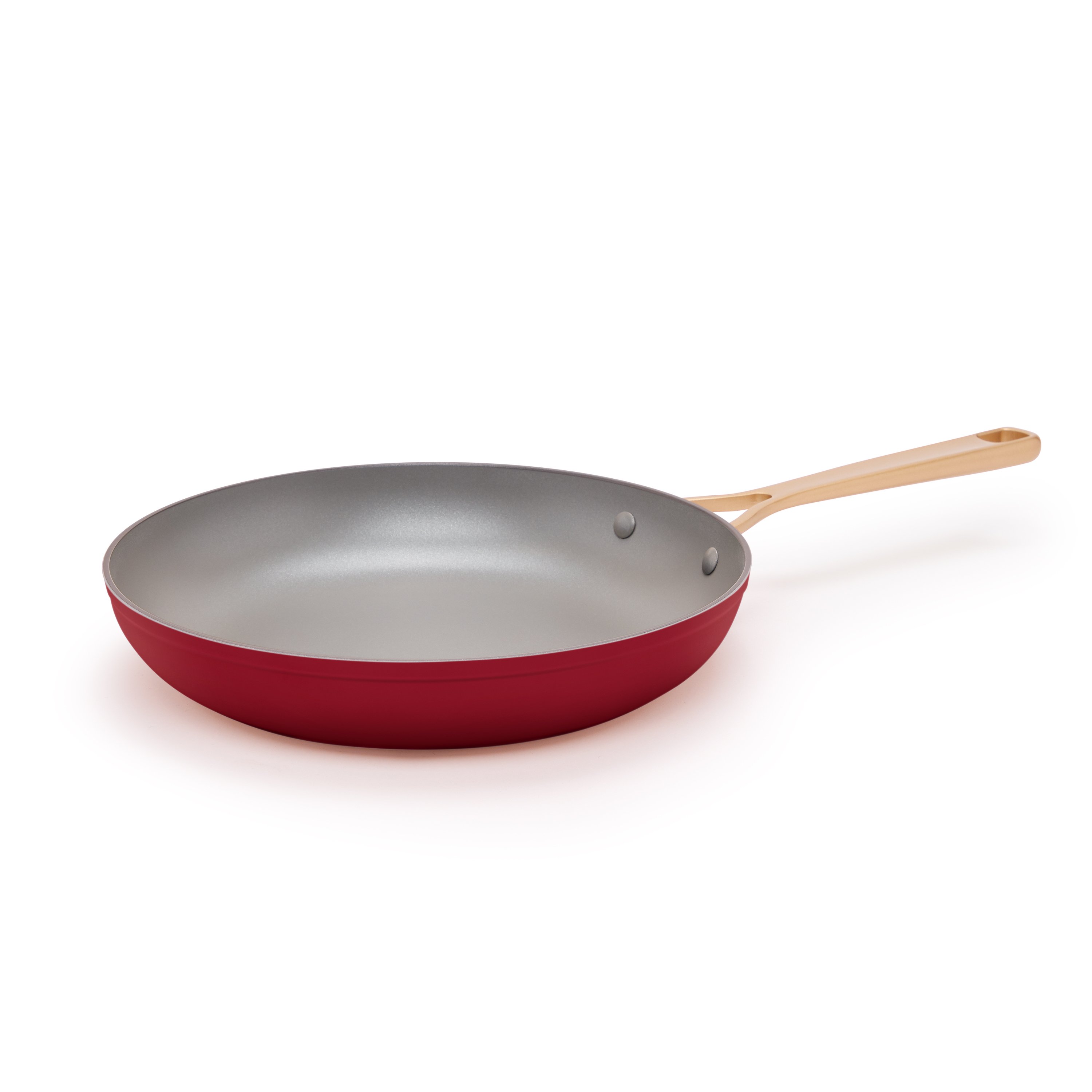Skillet Guide for Beginners: Crucial Tips and Techniques Revealed
Skillet Guide for Beginners: Crucial Tips and Techniques Revealed
Blog Article
Master the Art of Food Preparation With a Skillet: a Newbie's Guide
Master the Art of Cooking With a Frying Pan: a Newbie's Overview is an extensive resource for people excited to improve their cooking abilities making use of a flexible cooking area device - the frying pan. From selecting the appropriate frying pan to understanding essential strategies and heat control, this guide covers all the fundamentals essential to end up being a competent skillet chef.
Choosing the Right Frying Pan
Selecting the ideal skillet is important for grasping the art of food preparation with this versatile kitchen device. With a lot of choices readily available in the marketplace, it can be frustrating to make the ideal option. Comprehending the key factors to consider can streamline the decision-making procedure.
Cast iron skillets are known for their excellent warmth retention and sturdiness, while stainless steel skillets use also heat distribution and are very easy to maintain. Non-stick frying pans are terrific for low-fat cooking and simple cleaning.
It is suggested to choose a frying pan that matches the dimension of your stovetop heater. A skillet that is also small might result in congestion, while a frying pan that is too huge can lead to irregular food preparation.
Last but not least, handle style and warm resistance must additionally be taken into consideration. A skillet with a long and comfortable handle allows for easy ability to move and decreases the danger of burns. Furthermore, the deal with must be heat-resistant to ensure safe handling throughout cooking.
Essential Frying Pan Methods
To genuinely understand the art of cooking with a frying pan, it is vital to learn an array of techniques that will elevate your cooking abilities to new elevations. While the frying pan is a versatile and important tool in the cooking area, understanding and understanding these techniques will certainly enable you to create a range of tasty recipes with convenience.
One important strategy is sautéing, which involves food preparation food promptly in a percentage of hot oil or fat. This approach is perfect for cooking veggies, meat, or fish and shellfish, as it assists to preserve their natural tastes and structures.
Another vital method is searing, which involves food preparation food over high warmth to create a flavorful and browned exterior. This is usually done with meats, such as steak or poultry, to establish a caramelized crust while keeping the indoor moist and tender.
Deglazing is additionally an important strategy that entails adding fluid, such as broth or red wine, to the frying pan after food preparation meat - skillet guide. This aids to create a savory sauce by loosening up and integrating the browned bits adhered to the base of the skillet
Lastly, stir-frying is a popular technique that entails rapidly cooking small pieces of food over high warmth while constantly mixing. This method is typically utilized in Oriental cuisine and permits a fast and tasty meal.

Grasping Warmth Control
Understanding warm control is crucial for attaining ideal results when cooking with a skillet. The capacity to regulate the temperature and control allows you to prepare different ingredients to perfection. Recognizing warmth control not just avoids your food from melting or undercooking, however it also enhances tastes and textures.
To start, it is important to pre-heat your frying pan properly. This step makes sure also warmth circulation throughout the pan, allowing food to cook equally. As soon as preheated, you can adjust the warm level according to your dish's needs. Reduced warm is perfect for fragile foods that call for mild food preparation, such as fish or eggs. Greater warmth is suitable for scorching meats or achieving a crispy crust on vegetables.
Adjusting the warmth as well frequently can affect the cooking procedure. If you observe your food cooking too promptly, decrease the heat a little.
Finally, bear in mind the warm retention homes of your skillet. Cast iron frying pans, for instance, preserve heat well and need reduced warm setups compared to stainless-steel or non-stick frying pans. By recognizing your skillet's warmth conductivity, you can better control the food preparation process and attain consistent outcomes.
Caring for Your Frying Pan
Proper upkeep is key to maintaining the durability and performance of your special info frying pan. Taking care of your frying pan includes a few easy yet important steps that will guarantee it remains in exceptional condition for many years to come.

Secondly, it is advised to season your skillet check my site frequently. Seasoning includes applying a thin layer of oil to the frying pan's surface area and home heating it until it polymerizes, creating an all-natural non-stick coating. This procedure boosts the skillet's performance and protects against food from sticking.
Moreover, keeping your skillet appropriately is crucial. To prevent harming the surface area or scraping, put a paper towel or towel between each skillet if you stack them. It is additionally recommended to keep your frying pan in a completely dry location to avoid wetness and rust development.
Last but not least, bear in mind to regularly check your frying pan for any kind of signs of wear or damages - skillet guide. Address them without delay to protect against additional damage. if you notice any issues.
Delicious Frying Pan Recipes
For those aiming to expand their cooking arsenal, the frying pan supplies an array of delicious recipe alternatives. The convenience of this cooking area linked here tool enables a variety of cooking strategies, from searing and browning to sautéing and simmering. Whether you prefer meat, fish and shellfish, veggies, or grains, there are many skillet dishes that will please also one of the most discerning palate.
One classic frying pan recipe is the seared steak. By preheating the skillet and including a touch of oil, you can attain a completely caramelized crust on the outside while keeping the meat tender and juicy on the inside. Pair it with a side of sautéed vegetables or a luscious mushroom sauce for a full and hearty dish.
If you remain in the mood for seafood, a frying pan recipe like lemon garlic shrimp is both fast and delicious. With simply a couple of simple components like fresh shrimp, minced garlic, lemon juice, and butter, you can develop a delicious meal that can be appreciated by itself or served over pasta or rice.
For vegetarians, a frying pan recipe like ratatouille is an excellent option. This standard French meal features a collection of colorful vegetables such as eggplant, zucchini, bell peppers, and tomatoes, prepared with each other with herbs and seasonings to develop an unified blend of tastes.
Conclusion
In verdict, mastering the art of food preparation with a skillet calls for choosing the ideal skillet, finding out crucial methods, understanding heat control, and looking after the skillet properly. By adhering to these actions, novices can end up being competent being used a frying pan for numerous delicious recipes.
Master the Art of Food Preparation With a Skillet: a Newbie's Overview is an extensive source for people eager to improve their cooking skills using a flexible kitchen device - the skillet. From selecting the appropriate skillet to grasping essential techniques and warmth control, this guide covers all the fundamentals essential to become a knowledgeable skillet cook. Additionally, it gives beneficial understandings on correct frying pan upkeep and provides a collection of tasty recipes that showcase the frying pan's potential. Cast iron frying pans are known for their excellent heat retention and toughness, while stainless steel skillets offer even heat distribution and are very easy to preserve. A frying pan that is as well little may result in overcrowding, while a skillet that is as well big can lead to unequal cooking.
Report this page